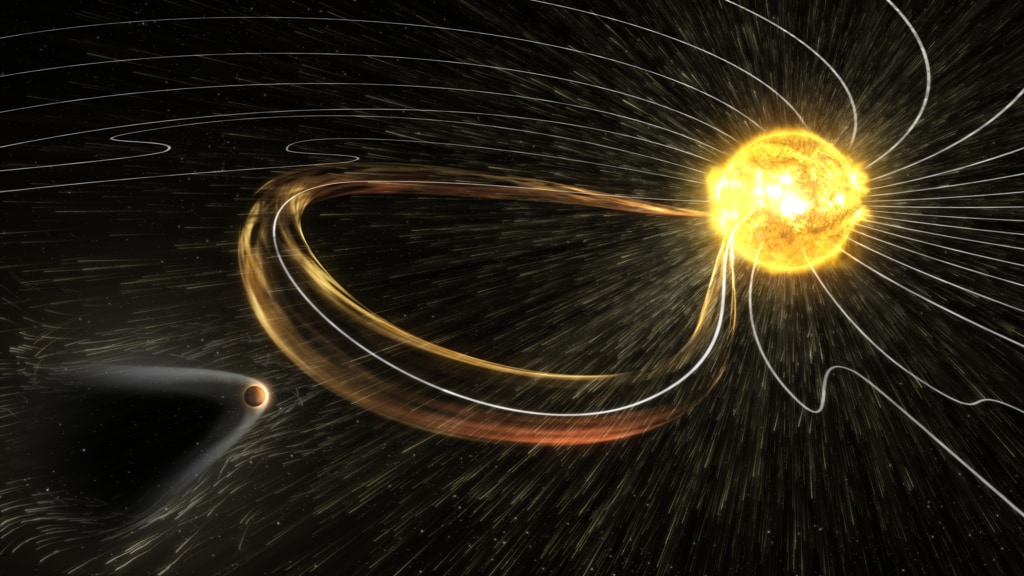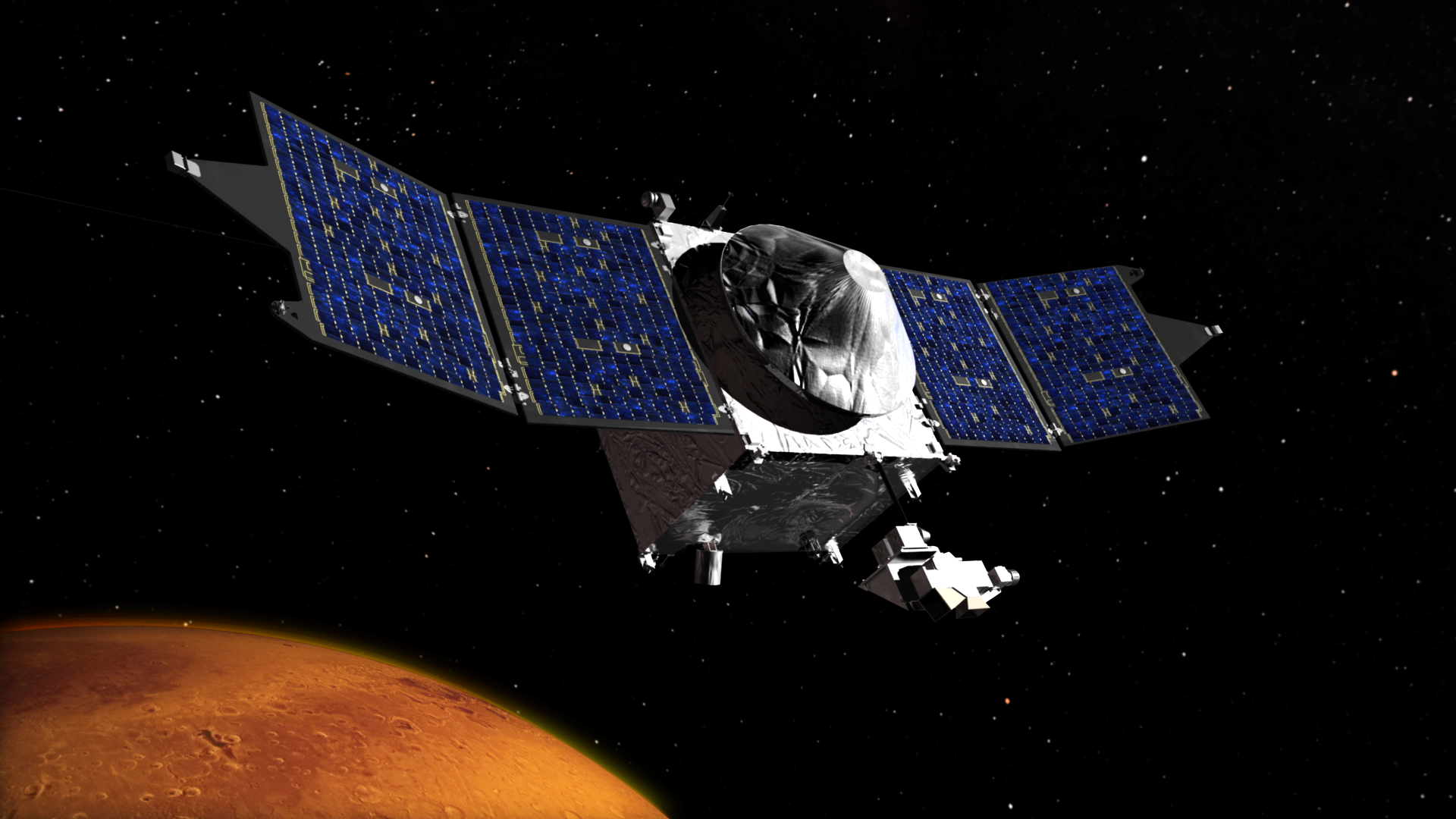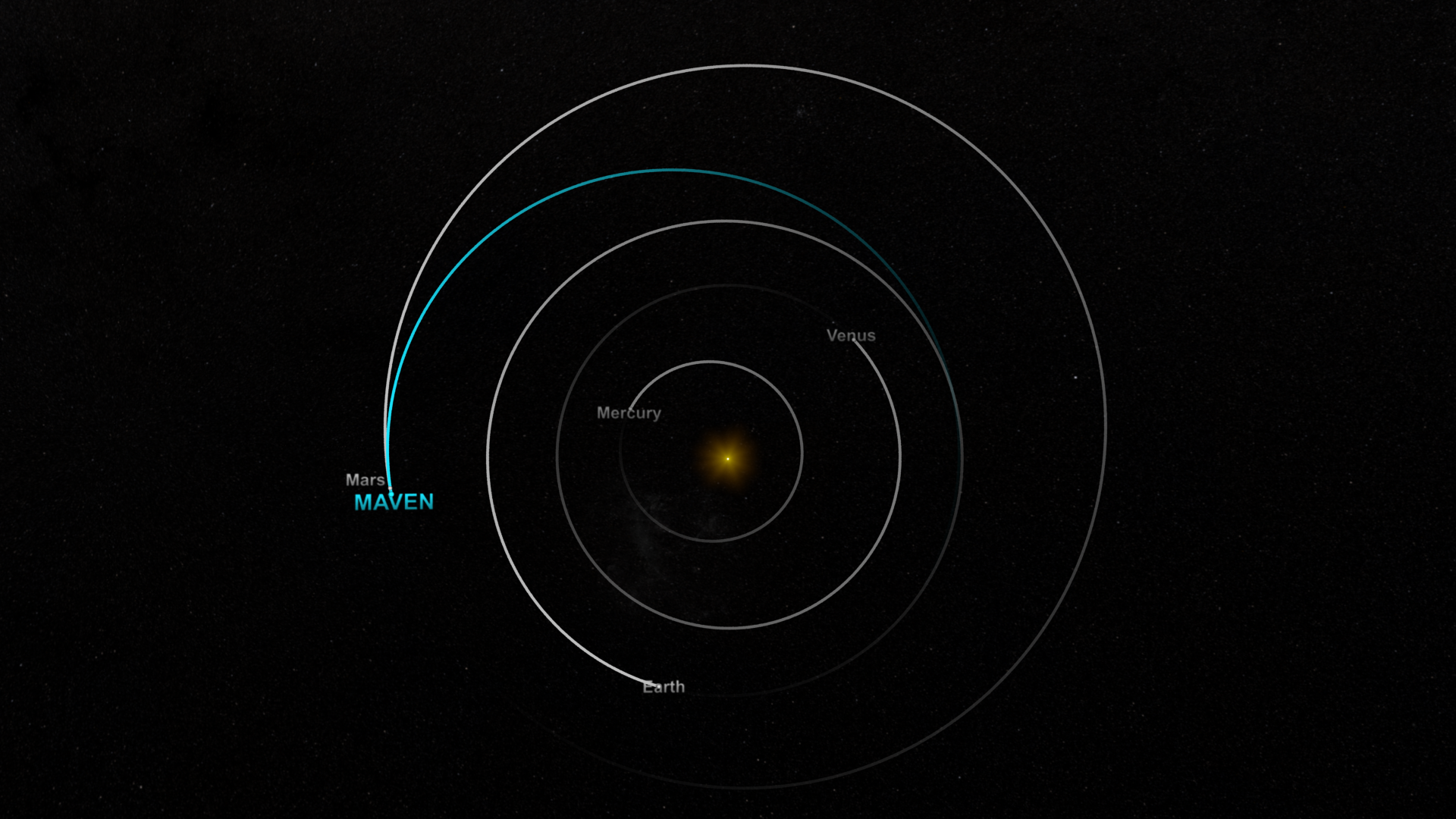MAVEN at Mars
On September 21, 2014, NASA’s Mars Atmosphere and Volatile Evolution, or MAVEN, spacecraft completed its 10-month journey and entered orbit around the Red Planet. As the first mission devoted to observing the tenuous upper atmosphere of Mars, MAVEN will help scientists determine how much of the atmosphere has been lost throughout the planet’s history and which processes have driven that loss. The spacecraft has already conducted preliminary observations of important gases in the planet’s upper atmosphere and sent those images back to Earth. Watch the videos to learn more about the MAVEN mission.

NASA’s MAVEN spacecraft has entered orbit around Mars and is observing the planet's thin upper atmosphere.
How will MAVEN explore Mars? Find out in this video.
This visualization shows the arcing path that MAVEN took from Earth to Mars. The spacecraft traveled 442 million miles over 10 months.

MAVEN is investigating atmospheric loss on Mars by observing how the thin upper atmosphere interacts with the sun and the solar wind.

Mars’ surface (red) and the distributions of two gases being lost from its atmosphere—hydrogen (blue), atomic oxygen (green)—as seen by MAVEN.
For More Information
See NASA.gov
Credits
Please give credit for this item to:
NASA's Goddard Space Flight Center
MAVEN Mars images courtesy of NASA/University of Colarado/Laboratory for Atmospheric and Space Physics
-
Animators
- Greg Shirah (NASA/GSFC)
- Ernie Wright (USRA)
- Walt Feimer (HTSI)
- Michael Lentz (USRA)
- Chris Smith (HTSI)
-
Video editor
- Dan Gallagher (USRA)
-
Narrator
- Dan Gallagher (USRA)
-
Producers
- Dan Gallagher (USRA)
- Michael Starobin (HTSI)
-
Scientists
- David Folta (NASA/GSFC)
- Bruce Jakosky (LASP)
-
Project support
- Aaron E. Lepsch (ADNET Systems, Inc.)
- Laurence Schuler (ADNET Systems, Inc.)
- Ian Jones (ADNET Systems, Inc.)
-
Videographers
- Rob Andreoli (Advocates in Manpower Management, Inc.)
- Dan Gallagher (USRA)
-
Writer
- Elizabeth Zubritsky (ADNET Systems, Inc.)
Release date
This page was originally published on Tuesday, October 14, 2014.
This page was last updated on Wednesday, May 3, 2023 at 1:50 PM EDT.


